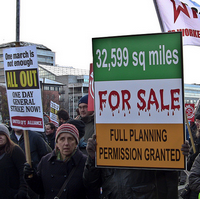Editor's note: This is the first of a two-part series on the fall of Irish Prime Minister Brian Cowen's government. Part I examines the domestic factors leading to the government's collapse. Part II will examine the impact of the EU/IMF bailout on Ireland and the European Union.
DUBLIN -- After months of lurching from crisis to crisis, the government of Ireland's lame-duck Prime Minister Brian Cowen finally came to an end Tuesday, with new elections to be held Feb. 25. Whatever happens Cowen will not be returning as prime minister -- he will not contest the election after having been ousted from the leadership of his party, Fianna Fáil, at the end of January. With a disapproval rating of 95 percent, his is the most unpopular government in the history of the state, and his party has gone from being the most successful in Europe to the brink of annihilation.
In retrospect, Cowen's downfall was sealed years ago. In 2008, as the credit crunch started to bite and Ireland's property market collapsed, the government guaranteed the debts of the state's private banks, believing them to be suffering from a liquidity crisis. In fact, Ireland's banks were insolvent, and the bailout ended up saddling the state with debts equaling roughly 300 percent of annual tax revenues. As the true cost of the bank bailout emerged, rates for Irish bonds skyrocketed, and Ireland had to turn to the IMF and ECB for an unpopular bailout of its own.

